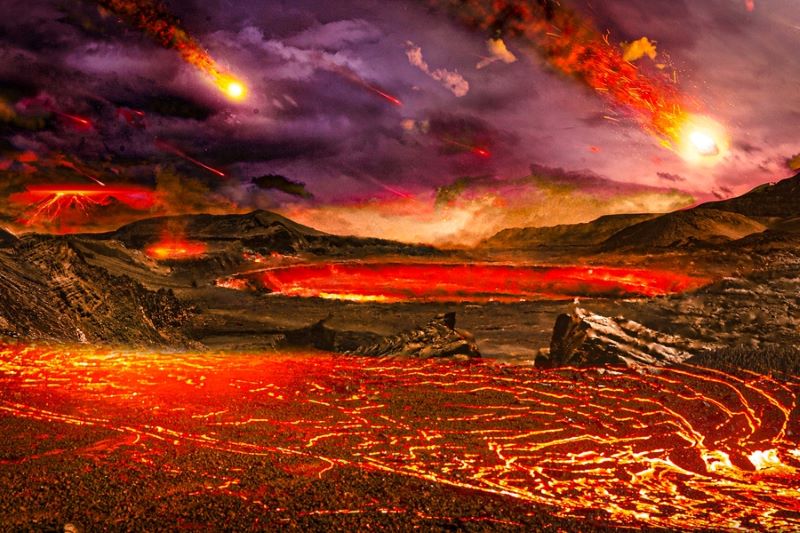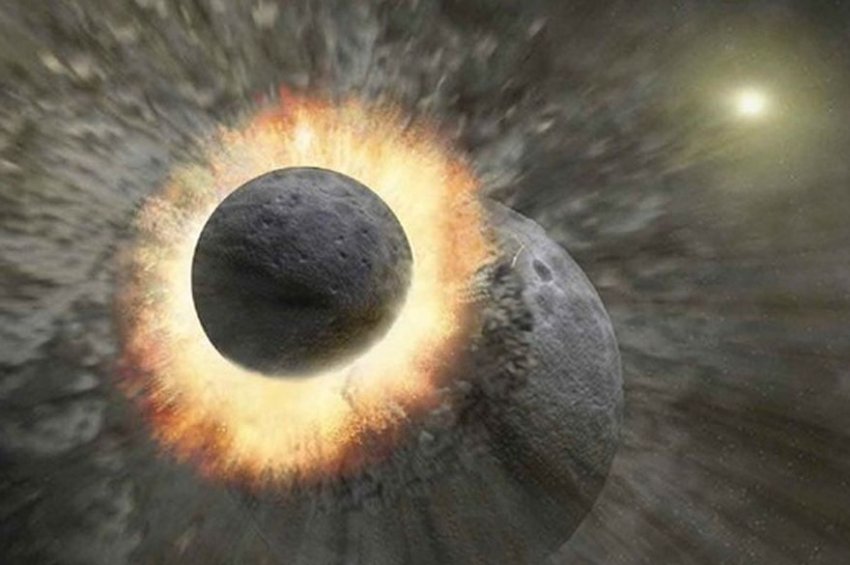Scientists believe chunks of proto-Earth are buried deep beneath the planet’s crust
Scientists have found what could be the first direct evidence of Earth’s earliest form — a “proto-Earth” that existed 4.5 billion years ago before a massive collision reshaped our planet and created the Moon.
A study published in Nature Geoscience by researchers from the Massachusetts Institute of Technology (MIT), the National Aeronautics and Space Administration (NASA) and several international institutions reports the discovery of a faint chemical signature in ancient rocks that appears to have survived that cataclysmic impact.

The surface of the proto-Earth before the alleged impact with Theia. Credit: MIT
The find could offer a rare glimpse into the materials that formed the very first version of Earth.
“This is maybe the first direct evidence that we’ve preserved the proto-Earth materials,” Nicole Nie, assistant professor of Earth and planetary sciences at MIT and co-lead author of the study, was quoted as saying in a MIT statement.
“We see a piece of the very ancient Earth, even before the giant impact. This is amazing because we would expect this very early signature to be slowly erased through Earth’s evolution,” she added.
A planet destroyed and reborn
Billions of years ago, the early solar system was a chaotic cloud of dust and gas that gradually clumped together to form the first planets. The young Earth — still molten and covered in oceans of lava — was struck less than 100 million years later by a Mars-sized object called Theia, the mainstream theory claims.

The least challenged theory of the Moon's formation. Credit: NASA
The collision melted and remixed nearly the entire planet and produced the Moon in the process. Scientists long believed this “giant impact” erased all traces of Earth’s earlier material.
But the new study challenges that idea. By analyzing ancient and deep rock samples from Greenland, Canada, and Hawaii, Nie’s team discovered a tiny but consistent imbalance in potassium isotopes — particularly a deficit of the isotope potassium-40 — that could only be explained if part of the planet’s original interior survived the impact.
Ancient fingerprints in stone
Potassium occurs naturally in three isotopes — potassium-39, potassium-40, and potassium-41. Using ultra-sensitive mass spectrometers, the researchers detected that these ancient rocks contained even less potassium-40 than any known modern Earth samples.
More to read:
[video] A passing star altered Earth’s orbit 2.8 million years ago
To confirm the finding, they compared the results to meteorites — the solar system’s oldest materials — and ran computer simulations to test whether known geological or cosmic processes could have caused the imbalance. None of the models matched.
The results suggest that some material from the proto-Earth’s mantle remained untouched, buried deep beneath the surface where it escaped the violent mixing caused by the Moon-forming collision.
A missing piece of Earth’s origin story
Interestingly, the chemical pattern found in these rocks doesn’t match any known meteorites, implying that the building blocks of the proto-Earth are still missing from collections on Earth.
The discovery opens a new chapter in understanding how Earth — and perhaps other rocky planets — first formed. Deep within our planet, it seems, a small piece of its ancient self may still survive.
More to read:
Scientists talk about a hidden ninth planet in our Solar System - again
The preserved pieces of proto-Earth remnants could reveal the chemical ingredients that shaped not only our planet, but also the Moon and other rocky worlds in the solar system. By analyzing their composition, researchers hope to learn how elements essential for life — such as carbon, oxygen, and water — were distributed in the early Earth.
In short, these buried fragments may offer a direct glimpse into the recipe that made our world habitable.
In this context, perhaps it makes sense to have a look at the Moon’s mantle too?



![[video] Putin rules from shadows: Investigation finds Russian leader rarely works in Moscow](/news_img/2025/11/11/news1_mediu.jpg)



![[video] Putin used sex workers to sideline foes and rise to power](/news_img/2025/11/07/news2_mediu.jpg)